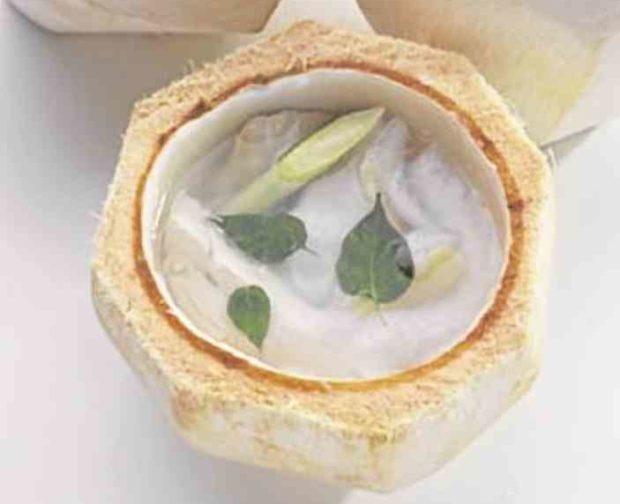
Entries are now being accepted to the 2018 Doreen Gamboa Fernandez (DGF) Food Writing Awards.
For 2018, the main ingredient is fowl. In her book “Palayok” (Bookmark Inc., 2000), Fernandez wrote that fowl is “mainly chicken, duck and gamebirds” but Filipino cooking includes much more like turkey, goose and pigeon.
She also wrote that “variations on the basic [cooking] methods come about because of the nature of the fowl, or the tastes of the region… roasted on coals, simmered in broth, stewed with vegetables, and fried.”
In the chapter “Hometown Food” in her book “Sarap,” (Hiyas Press, 1988), Fernandez recalls chicken inasal in Silay “which used to be available at merienda time only in the market area. The chicken parts are marinated in tuba (coconut) vinegar and garlic, then brushed with lard while grilling over coals. I loved the tang, the charcoal flavor, and especially the adventure of eating market food.”
Jose Rizal included tinolang manok (boiled chicken) in his novel “Noli Me Tangere.” Fernandez wrote how “it was seen as an indicator of social esteem. The friar who received on his plate the chicken neck and wing instead of leg or breast, saw it as a slight to his dignity.”
Favorites
Many of us have our favorite ways with chicken. Mine is Aristocrat’s honey chicken. Chicken can dominate our fowl experience but there are so many other “birds” out there.
Turkey was many families’ Christmas bird. The traditional way was to cook it embochado which, according to Nora Daza’s recipe, had the turkey boiled then simmered instead of roasted. That process seemed the best way to tenderize free-range native turkeys.
Daza also had a pigeon pie recipe in her book “A Culinary Life” (Anvil Publishing, 1992) from her mother-in-law, Angeles Ortega Daza. It involved cooking the pigeons in a pie with potatoes, boiled eggs and fried bacon.
In Pasig and the other southern towns of Rizal, crispy fried itik (baby duck) makes its appearance in the afternoon just like Fernandez’s memory of Silay chicken inasal.
Ilonggos used to eat a species of birds called mayang bungol (deaf), the description appended to the name because the bird looks like it is wearing white earphones.
The DGF Food Writing Award requires contestants to submit an essay on fowl viand consisting of 800 words in English. Every entry will have a pen name. The pen name and real name will be contained in an author’s information file which will also have the contestant’s contact numbers, e-mail and address. The two files, entry and author’s information will be e-mailed to dgfawards@yahoo.com.ph. Each contestant is allowed only two entries.
Deadline of submission is Aug. 31.
The awarding of the 2018 winners as well as the 2017 winners will be on Oct. 27 at the National Food Showdown, the venue to be announced later. At the same occasion, the book “Sangkap: Philippine Cooking Ingredients” (FWAP, 2018) will be launched. It compiles the winning essays of the DGF Awards for the years 2013 to 2017.
Write your “fowl” stories and tell us how these birds are cooked the Filipino way.
E-mail pinoyfood04@yahoo.com